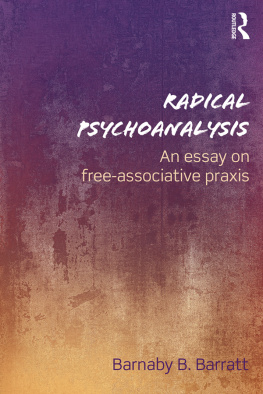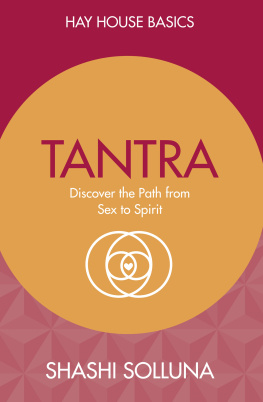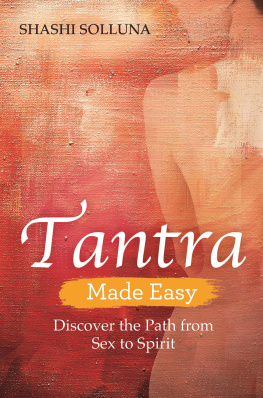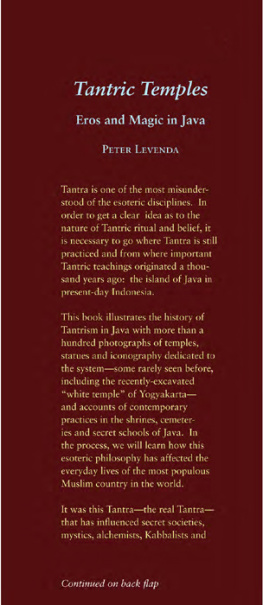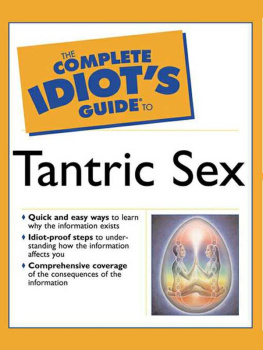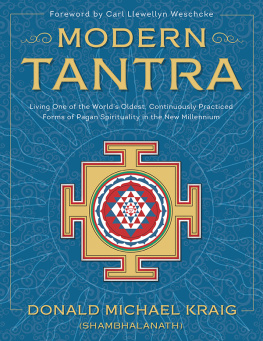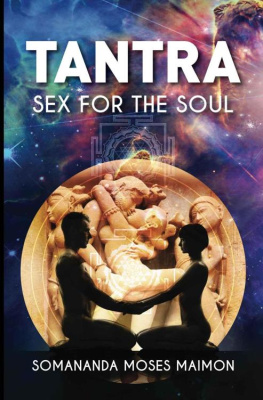What is Tantric Practice?
Barnaby B. Barratt, PhD, DHS
Copyright 2006 by Barnaby B. Barratt, PhD, DHS.With collaboration and support from Marsha Anita Rand.Cover design by Jennifer EverlandPhotography by Bruce Nourse (cover photo) and Kirk Candlish (author photo)
| Library of Congress Control Number: | 2006902160 |
| ISBN 10: | Hardcover | 1-4257-1150-2 |
| Softcover | 1-4257-1149-9 |
| ISBN 13: | Hardcover | 978-1-4257-1150-4 |
| Softcover | 978-1-4257-1149-8 |
| ISBN: | ebk | 978-1-4653-3009-3 |
All rights reserved. No part of this book may be reproduced or transmitted in any form or by any means, electronic or mechanical, including photocopying, recording, or by any information storage and retrieval system, without permission in writing from the copyright owner.Email: This book was printed in the United States of America.To order additional copies of this book, contact:
Xlibris Corporation
1-888-795-4274
www.Xlibris.com
31715
Contents
May all beings be happy and free;
May these writings contribute
to the happiness and freedom of all beings.
The intent of this book is to offer a readily accessible and balanced answer to the question What is Tantric Practice? and so to clear up some of the many confusions surrounding the notion of tantra as it is being used today in North America, Europe, and elsewhere.
The question can be approached from a variety of angles, and could be answered in many ways and with different degrees of detail. So I would like to suggest that the manner in which you make use of this book can aptly be customized to suit your particular level of interest, your prior knowledge of tantra, and your preference for a practical approach, a philosophical approach, or an historical approach. In my mind there are at least five ways you might read this volume:
I. If you would like a quick answer to the question
What is Tantric Practice? then I suggest you read Chapters 1, 2, 6, and perhaps 17 for good measure.II. If you are considering embarking on tantric practice, perhaps even making it your spiritual path in life, then you will want at least to add Chapters 7 through 11, as well as Chapter 5 and Chapter 16. The first appendix is also written with you in mind.III. If you are skeptical about the spiritually esoteric notion that our human body contains subtle erotic energies, which do not conform to the objective picture of the bodys structures and functions as generated by western science, then I ask you to study (in addition to Chapters 1, 2, 6, and 17) Chapters 3 and 4. These Chapters are perhaps the most difficult to read because they attempt to specify philosophically the relation between the divine and the mundane. These Chapters address a mode of embedded relatedness that is extremely difficultand ultimately impossiblefor our logical-analytic mind to grasp. We are intellectually attached to foundational assumptions that something either is or is not, that a phenomenon is either one way or the other, and that time is a linear, unidirectional flow, experienced only in the fullness of the present. These intellectual attachments sooner or later obstruct our access to the reality of the divine. Chapters 3 and 4 attempt to honor your skeptical intellect, and yet demonstrate how this dimension of life that is spiritually esoteric may also be more profoundly and meaningfully real than the everyday world of appearances.IV. If you would like an historical answer to the question
What is Tantric Practice? then Chapters 12 through 16 are written to satisfy this curiosity, and can be added to the basic reading of Chapters 1, 2, 6, and 17. The second and third appendices contribute additional historical details.V. Finally, I hope that there are some readers who will enjoy the entire book, and find benefit in its reading.
I have written this volume because, in the contemporary scene (in North America, in Europe, and elsewhere), the term tantra often merely implies a commitment to sexual practices that prolong pleasure, intensify orgasming, and promote styles of intimate relations that are more honoring, more emotionally engaged, and perhaps more spiritually grounded than might otherwise be the case.
As admirable as this commitment is, some peopleespecially those with an interest in spiritual paths of Asian originare becoming aware that tantra actually means more than this.
For example, it is well known that Tenzin Gyatso, His Holiness the XIVth Dalai Lama, is an abstinent monk, but less known is the fact that his spiritual practices are nonetheless tantric, as indeed, are all those who follow in his path.
What will be shown in this book is that all tantric spiritual practices are indeed erotic, but not necessarily sexual in the conventional sense of the term sex. For tantric practitioners, the erotic entails the mobilization and alignment of our embodied spiritual energies toward the divine, and such spiritual practice may or may not involve sex in the usual sense.
As tantra becomes more widely known, we urgently need to appreciate something about spiritual practices that are erotic meaning that they lead us toward a union or an alignment of our subtle energies with the divineand which may or may not involve explicit sexual activity in the ordinary sense. To advance such an appreciation is one of the main intentions of this book. For there is much to be said about the ecstatic nature of these erotic spiritual practicesmeaning that they take us out of the conventional and stultifying construction of our egotismthus offering humanity powerful methods, which free us from our suffering by returning us to the Sacred Unity of Love.
The contemporary western world is understandably confused about the meaning of the tantric label. There has also been confusion in the lands of its originthe Indian subcontinent. Traditionally, the term has at least three different meanings relating to:
A path of spiritual practices, and a
wayoflivinginmeditation , that finds divinity within our embodiment as the abundant and exuberant flow of subtle sacred energies, and that taps into this flow with the intention of liberating ourselves from the structures that perpetuate human suffering.A body of literature called tantras that refer to any discipline by which knowledge, wisdom or intuition, are expanded, and that therefore may cover topics as seemingly diverse as psychology, medicine, botany, geology, astronomy and metaphysical philosophyas well as astrology, alchemy, and what many of us would consider magical procedures.A form of religious devotion, often mixed up with what is called Shaktism, which is the worship of female versions of deities (or female and male deities who are erotically conjoined), as anthropomorphic personifications of energetic principles that are found within the divinity of our human embodiment.
The three usages often overlap, but I believe it is helpful to parse them apart, so that we can understand the heart of tantric practice, and distinguish it from what is derivative, tangential, or even thoroughly distractive.
The focus of this work is on tantra as a spiritual practice that addresses the divinity of subtle energies that flow within, through, and all around, our human embodiment. The intent is not to offer any details or instructions as to how to practice tantric spiritual methods. Rather, the intent is to discuss the nature of tantric practice, so as to clear away misunderstandings, and thus to provide a confident orientation for anyone stepping onto the tantric path. A different sort of introduction to tantric philosophy is also available in my TheWayofthe
Next page

